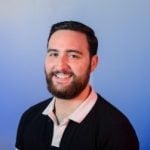- The INSIDER data team examined divorce rates over the past 150 years and found some interesting trends.
- Divorce rates steadily increased from the mid-1800s to the 1950s.
- The biggest increase in divorces was between the ’60s and ’70s.
- Since the turn of the 21st century, divorce has been on the decline.
It’s commonly believed that half of all marriages today end in divorce. It certainly feels that way, as headlines are filled with famous couples parting ways. But it hasn’t always been this way. In fact, divorce was once taboo.
To see how divorce changed over time, the INSIDER data team compiled information within the US from the CDC and data scientist Randy Olson. Since we know the number of divorces every year, but the population changes, we calculated the rate of divorce for every 1,000 people. It became clear that half of all marriages don’t end in divorce today. In fact, divorce is on the decline these days.
Keep reading to see more surprising trends the divorce rate has had throughout the years.
From 1867 to 1879, the annual divorce rate was 0.3 divorces per 1,000 Americans.

In the 19th and early 20th centuries, people often married to gain property rights or to move social class. All of that changed by the mid- to late 1800s, with the ideas of love and romance becoming the main reason to wed.
But that doesn't mean everyone stayed married. In 1867, there were 10,000 divorces, and by 1879, there were 17,000 that year. However, the rate of divorce stayed at a very low 0.3 divorces per 1,000 Americans.
The rest of the century, the annual rate steadily increased to 0.7 divorces for every 1,000 people.

In the 19th century, divorce was rare, and generally considered taboo. Unhappy couples would often separate but not legally get divorced.
But there were a few pioneers who did legally part ways. In fact, in 1880, the rate rose to 0.4 for every 1,000 Americans with 20,000 divorces, and it increased again in 1887 to 0.5. The rate didn't hit 0.7 until 1898 with 48,000 divorces that year.
At the turn of the century, the annual divorce rate rose to 0.9 divorces for every 1,000 people in a given year.

At the start of the 20th century, divorce was still considered taboo and a foreign concept. In 1901, the rate rose from 0.7 for every 1,000 people to 0.8 with 61,000 divorces that year. It increased again in 1907 to 0.9, and stayed there for the rest of the decade.
As the country entered World War I in the 1910s, each year there was still only 1 divorce for every 1,000 Americans.

As men went off to fight in World War I, many women entered the workforce, earning more independence and freedom. As they started to create an identity for themselves, some realized they didn't need a man to depend on for security. Although that percentage is quite small, there are a few who got divorced.
In 1912, the rate of divorce reached 1 divorce for every 1,000 people, and hit 1.4 in 1919 with 142,000 divorces.
During the Roaring '20s, the divorce rate climbed up to 1.7 divorces for every 1,000 Americans.

During the '20s, women continued to gain their independence, as they embraced the life of a flapper and started dating publicly. Challenging traditional gender roles, many women chose to stay single longer, instead of getting married young. The number of divorces increased to 1.7 per 1,000 people in 1928 and 1929 with 200,000 divorces.
At the start of the 1930s, the yearly divorce rate briefly dipped, but then climbed again to 1.9 divorces for every 1,000 people.

When the Great Depression hit in the early '30s, a poor labor market meant that many women had to rely on men again for money. During this time, the divorce rate slipped from 1.6 per 1,000 people in 1930 to 1.3 in 1933. "Love in the Time of the Depression: The Effect of Economic Conditions on Marriage in the Great Depression" postulates that "Marriages formed during tough economic times were more likely to survive compared to matches made in more prosperous time periods."
By the second half of the decade, the rate started to climb again, reaching 1.9 in 1939 with 251,000 divorces.
In the '40s, the annual divorce rate reached 3.4 divorces for every 1,000 Americans.

Like during World War I, women entered the workforce again when the US joined World War II. They once again earned more independence and freedom, leading to a higher divorce rate in the country.
In 1940, the rate was two divorces per 1,000 people, but reached 3.4 in 1947. The rate dipped over the next few years, ending the decade with a 2.7 per 1,000 rate and 397,000 divorces.
The divorce rate decreased in the '50s as American ideals changed.

The idea of the nuclear, All-American Family was created in the 1950s, and put an emphasis on the family unit and marriage. This time period saw younger marriages, more kids, and fewer divorces.
In fact, the divorce rate was 2.5 divorces for every 1,000 people in 1950, and dropped to 2.3 in 1955. In 1958, the rate even slumped to 2.1, with 368,000 divorces.
In the '60s, the rate slowly started to climb again, ending the decade with a new high: 3.2 annual divorces for every 1,000 Americans.

Almost as a defiance to the ideals of the '50s, the next decade changed everything. During the 1960s, women started to close the education gap and the country started to embrace more progressive politics. As a result, women sought independence, causing the divorce rate to rise significantly.
In 1960, the rate was 2.2 per 1,000 Americans, and reached 2.5 in 1965. By 1969, the rate jumped to 3.2 with 639,000 divorces.
In 1970s, the annual rate was 3.5 per 1,000, but by the end of the decade, it reached 5.1 divorces per 1,000 Americans.

The 1970s were categorized by hippies and free love. As an emphasis was put on group love and an absence of legal ties instead of coupling and marriage, divorce rates rose dramatically throughout the decade. This was the defining decade for divorce as the numbers reached an all-time high.
In 1970, the rate was 3.5, and by 1972 it had jumped to 4 divorces for every 1,000 Americans. In 1976, it jumped to 5, and by 1979, the rate was 5.3 per 1,000 American, with 1,193,062 divorces that year.
The divorce boom started to slow down and decline in the '80s.

After an all-time high in the '70s, divorces in the 1980s seemed to slow down. In 1980, the rate was 5.2 divorces per 1,000 people, and by 1989, it had dropped to 4.7.
The divorce rate remained steady at 4 divorces for every 1,000 Americans in the '90s, but slowly declined throughout the decade.

Although no data was recorded for 1995 and 1996, it's apparent that the divorce rate continued to decline throughout the decade - even if it hovered around 4 for every 1,000 people. In 1990, the rate was 4.7 and dropped to 4.3 in 1997. By 1999, the rate reached 4.1 divorces for every 1,000 Americans with 1,145,245 divorces that year.
Since the turn of the 21st-century, the divorce rate continues to decline rapidly.

Since 2000, California, Georgia, Hawaii, Louisiana, and Minnesota have stopped reporting divorce rates, but it's still clear that the number of divorces is declining all over the US. By 2010, the rate of divorces dropped to 3.6 for every 1,000 people, and in 2017 the rate reached 2.9 with only 787,251 divorces - the lowest it's been since 1968.
TIME reports that older generations continue to get divorced, but the decline is due to the smaller amount of millennials getting married. Since the younger generation is getting married later in life and approaching marriage differently, the divorce rates have similarly declined.
Visit INSIDER's homepage for more.
- Read more:
- 18 times celebrities got real about their divorces
- 4 reasons why you should never feel ashamed of your divorce
- The common statistic that 'half of marriages end in divorce' is bogus
- I got a divorce but am still with my ex husband - here's how we made it work

